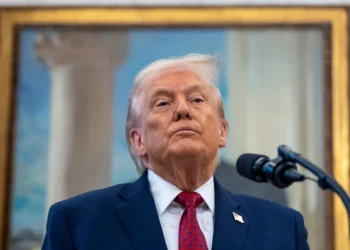GYEONGJU (Realist English). Chinese President Xi Jinping said Thursday that Beijing and Washington should be “partners and friends”, during his meeting with U.S. President Donald Trump, as the two leaders sought to address trade frictions and escalating tariff disputes.
The meeting, which lasted about one hour and forty minutes, ended with both leaders shaking hands but making no public statements, according to Chinese state media. It was their first in-person encounter since Trump began his second term in January.
“We’re going to have a very successful meeting,” Trump told reporters before the talks, describing Xi as “a very tough negotiator” but stressing their long-standing personal rapport. Asked whether the pair might finalize a trade deal, Trump replied, “Could be. We’ll have a great understanding.”
In his opening remarks, Xi struck a conciliatory tone, saying that it was “normal for the two leading economies of the world to have frictions now and then,” but that both sides should “work together to ensure the steady sailing forward of the giant ship of China-U.S. relations,” according to a statement from China’s Foreign Ministry.
Xi also praised Trump’s efforts to mediate regional conflicts and highlighted China’s diplomatic role in promoting peace, including support for ceasefire negotiations in Thailand and Cambodia.
A tactical pause, not a breakthrough
Analysts said Xi’s remarks were intended to create a cooperative atmosphere rather than secure immediate agreements. “Although the meeting itself is not about peace, Xi is mostly trying to create conditions for a deal,” said Tianchen Xu, senior economist at the Economist Intelligence Unit.
The talks took place amid heightened U.S.-China tensions over technology, trade, and security. Earlier this month, Beijing announced new export restrictions, while Washington threatened to ban software-related exports to China.
Washington has been seeking commitments from Beijing on a range of issues, including curbing fentanyl shipments, TikTok’s separation from parent company ByteDance, and reducing reliance on Chinese rare earths.
Beijing, meanwhile, has kept expectations low. Yet in a possible sign of progress, China purchased its first cargo of U.S. soybeans in months this week, Reuters reported.
“The meeting looks more like a tactical pause than a strategic breakthrough,” said Han Shen Lin, China director at The Asia Group. “A temporary truce is better than an uncontrolled trade war.”
Trump’s nuclear remarks overshadow talks
Just before the meeting, Trump announced on Truth Social that he had instructed the Pentagon to restart nuclear weapons testing, describing the U.S. as the world’s largest nuclear power “ahead of Russia and China.”
Analysts said the move appeared designed to project leverage. “It was bold and disruptive,” said Lin. “If it helps secure a trade win, it’s genius; if it poisons the well, we’re in for frostier summits ahead.”
Xi’s visit to South Korea — his first in 11 years — coincides with the APEC Economic Leaders’ Meeting in Gyeongju, where both leaders are expected to continue informal discussions with regional counterparts.
Global investors are watching closely. Markets rallied earlier this week on optimism that the two powers could move closer to a trade deal.
“A return to dialogue and engagement — regardless of short-term outcomes — is essential for stabilizing U.S.-China relations,” said Curtis Chin, chair of senior fellows at the Milken Institute and a former U.S. ambassador to the Asian Development Bank.
However, Chin cautioned that “headline-making meetings will only matter if they are followed by consistent implementation and genuine follow-through by both sides.”


















